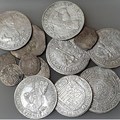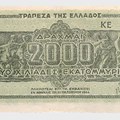
Coinage in the Roman World
Permanent exhibitionSince the early 3rd century BC Rome emerged as a significant power and until the 5th century AD her dominance and influence had reached the greater part of the ancient world. Roman coins - denarii,...

Since the early 3rd century BC Rome emerged as a significant power and until the 5th century AD her dominance and influence had reached the greater part of the ancient world. Roman coins - denarii,...

The Byzantine empire was the continuation of the Roman empire in eastern Mediterranean, a fact also shown in the gradual transition from the Roman to the Byzantine coinage. The Byzantine coinage was...

In the 5th century AD the Peoples of the Great Raids issued coinage following the Late Roman and Byzantine prototypes. In the mid-8th century the basis of the European numismatic system was set...

Since the 16th century, the creation of great commercial powers in Europe and the abundance in precious metals set the conditions for issuing and circulating many and big gold and silver coins. It...

The phoenices issued by Ioannis Kapodistrias in 1828 were the first national coins of the Modern Greek state. The drachm, first issued by Otho in 1832, was the basis of the Greek monetary system...

The world of medals is exhibited in Η. Schliemann’s winter office. Since the Renaissance, the need to depict on the small metallic surface the recollection of a person or an event, thus promoting...

The relationship between people and money in various periods of time is explored via philosophy, literature and history and presented in Η. Schliemann’s summer office. The strong international coins...